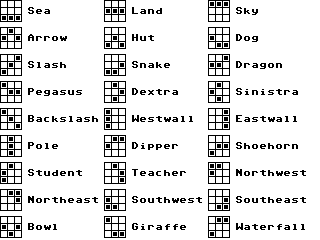Weekly Update 2: Permacomputing, XM Files, and Small Ortholinear Interfaces
2023-06-25

This week, I found myself reading about the aesthetics of permacomputing, fiddling with bits of fasttracker 2 engine code, and experimenting with small ortholinear grid interfaces.
Computing within limits
Permacomputing is a growing movement that combines computing with permaculture. It attempts to reimagine a future of computing that embrace the natural limits imposed by the resources of this planet. But what does that look like for artists and creatives? A relatively new paper called Permacomputing Aesthetics: Potential and Limits of Constraints in Computational Art, Design and Culture attemps to answer just that. It was a nice short read. While only a few weeks old, this text has already established itself a solid reference for what permacomputing is.
At the moment, I don't really think about permacomputing in the context of my work. But I think that's going to change.
Tiny little music files
I've been looking at an open source library called ft2play. It's an extremly accurate player for XM files made by Fasttracker 2. The XM file format is a fun thing to look at in 2023, because it packs so much information into a small place. You can make full lengths songs that take up less storage space than a single photo taken by a camera-phone. The XM format has stuff inside it that can be changed: you can do things like modify the instruments, the notes, the tempo, etc. The ft2play library can potentially work in my homebrew music software ecosystem, but it could benefit from some revision. Since it's open source, I've been slowly making small changes to the code. At some point, it should be ready to talk to my music software ecosystem.
A wrong but interesting way to use your numberpad
Strange symbols demand strange input systems. This is what compelled me to develop Ortho33, an input system for a 3x3 array of buttons (such as those found on a standard numberpad). This grid-like arrangement of buttons is known by mechanical keyboard enthusiasts as an ortholinear layout. This particular system allows input for up to 84 unique glyphs by pressing combinations of buttons in groups of 3. The hope is to use the Ortho33 input method inside of a symbol editing tool, capable of producing digital slabs of symbols for the Gestlings project.
Well, that's all for now!